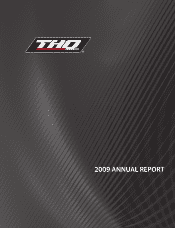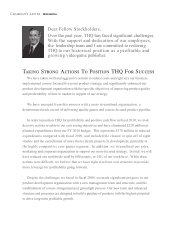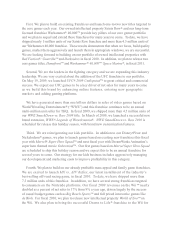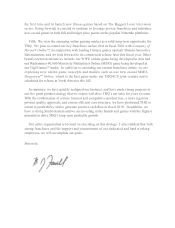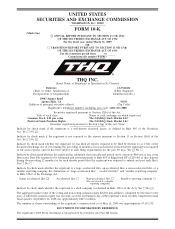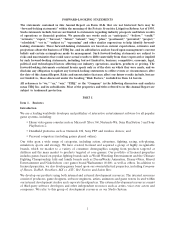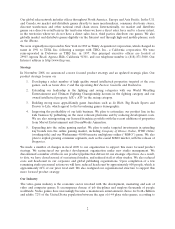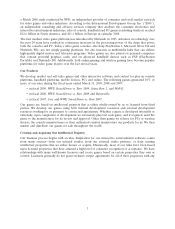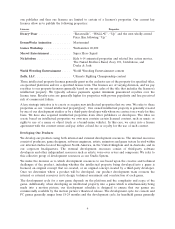THQ 2009 Annual Report Download - page 11
Download and view the complete annual report
Please find page 11 of the 2009 THQ annual report below. You can navigate through the pages in the report by either clicking on the pages listed below, or by using the keyword search tool below to find specific information within the annual report.
one publisher and thus our licenses are limited to certain of a licensor’s properties. Our current key
licenses allow us to publish the following properties:
Licensor Properties
Disney•Pixar .................. ‘‘Ratatouille’’, ‘‘WALL•E’’, ‘‘Up’’ and the next wholly-owned
Pixar film following ‘‘Up’’
DreamWorks Animation .......... Mastermind
Games Workshop ............... Warhammer 40,000
Marvel Entertainment ............ Super Hero Squad
Nickelodeon ................... Kids 6-14 animated properties and related live action movies,
The Naked Brothers Band, Zoey 101, Unfabulous, and
Drake & Josh
World Wrestling Entertainment ..... World Wrestling Entertainment content
Zuffa, LLC .................... Ultimate Fighting Championship content
These intellectual property licenses generally grant us the exclusive use of the property for specified titles,
on specified platforms and for a specified license term. The licenses are of varying duration, and we pay
royalties to our property licensors generally based on our net sales of the title that includes the licensor’s
intellectual property. We typically advance payments against minimum guaranteed royalties over the
license term. Royalty rates are generally higher for properties with proven popularity and less perceived
risk of commercial failure.
A key strategic initiative is to create or acquire new intellectual properties that we own. We refer to these
properties as our ‘‘owned intellectual property[ies]’’. Our owned intellectual property is generally created
by one of our development studios or by a third-party developer with whom we contract on a work-for-hire
basis. We have also acquired intellectual properties from other publishers or developers. The titles we
create based on intellectual properties we own may contain certain licensed content, such as music or
rights to use of a name or object (such as a brand-name vehicle). In this case, we enter into a license
agreement with the content owner and pay either a fixed fee or royalty for the use of such content.
Developing Our Products
We develop our products using both internal and external development resources. The internal resources
consist of producers, game designers, software engineers, artists, animators and game testers located within
our internal studios located throughout North America, in the United Kingdom and in Australia, and in
our corporate headquarters. The external development resources consist of third-party software
developers and other independent resources such as artists, voice-over actors and composers. We refer to
this collective group of development resources as our Studio System.
We make the decision as to which development resources to use based upon the creative and technical
challenges of the product, including whether the intellectual property being developed into a game is
licensed, an original concept that we created, or an original concept created by a third-party developer.
Once we determine where a product will be developed, our product development team oversees the
internal or external resources in its design, technical assessment and construction of each game.
The development cycle for a new game depends on the platform and the complexity and scope of the
game. Additionally, when developing an intellectual property into a game which is simultaneously being
made into a motion picture, our development schedule is designed to ensure that our games are
commercially available by the motion picture’s theatrical release. The development cycle for console and
PC games generally ranges from 18-24 months and the development cycle for handheld games generally
4

